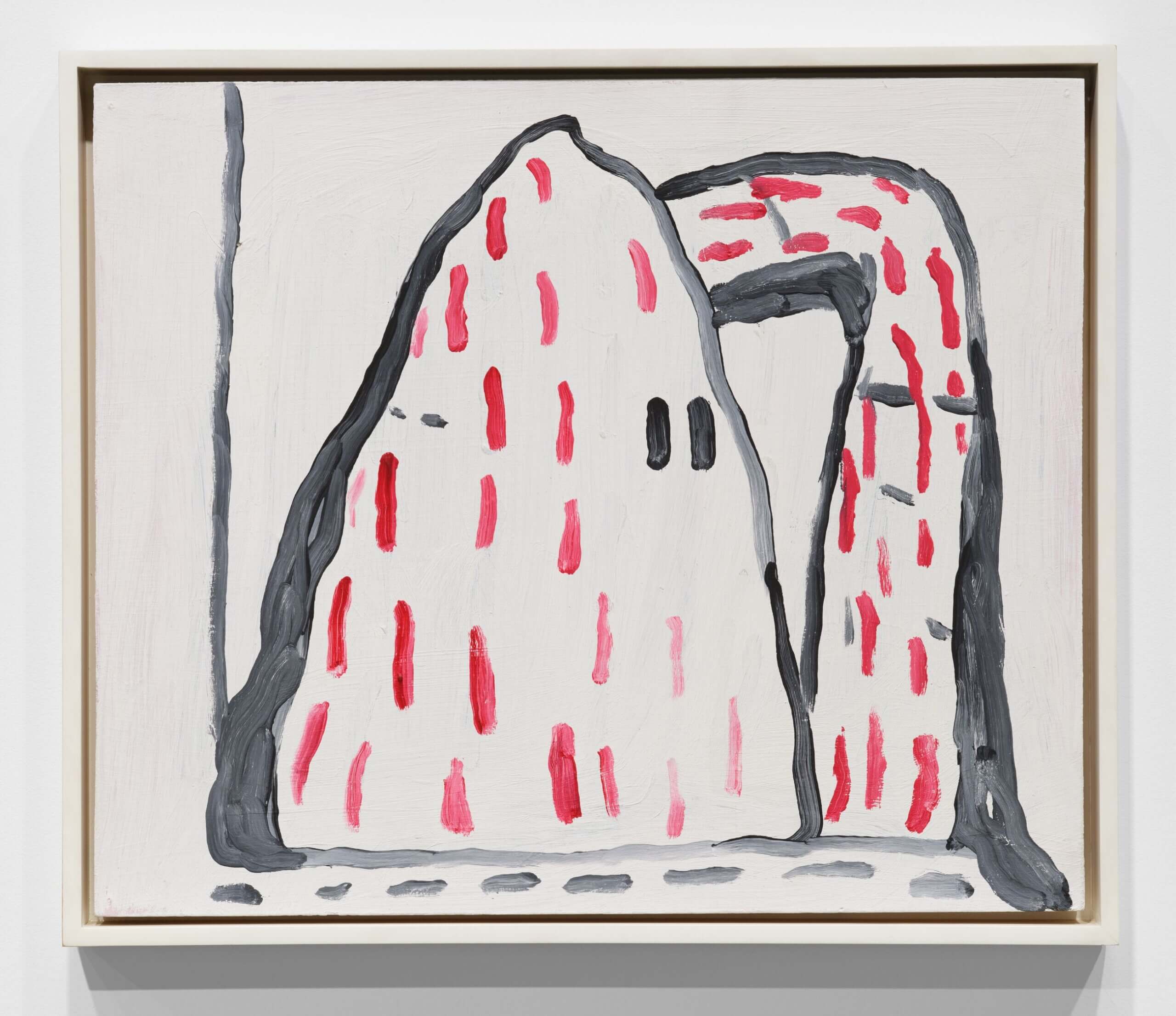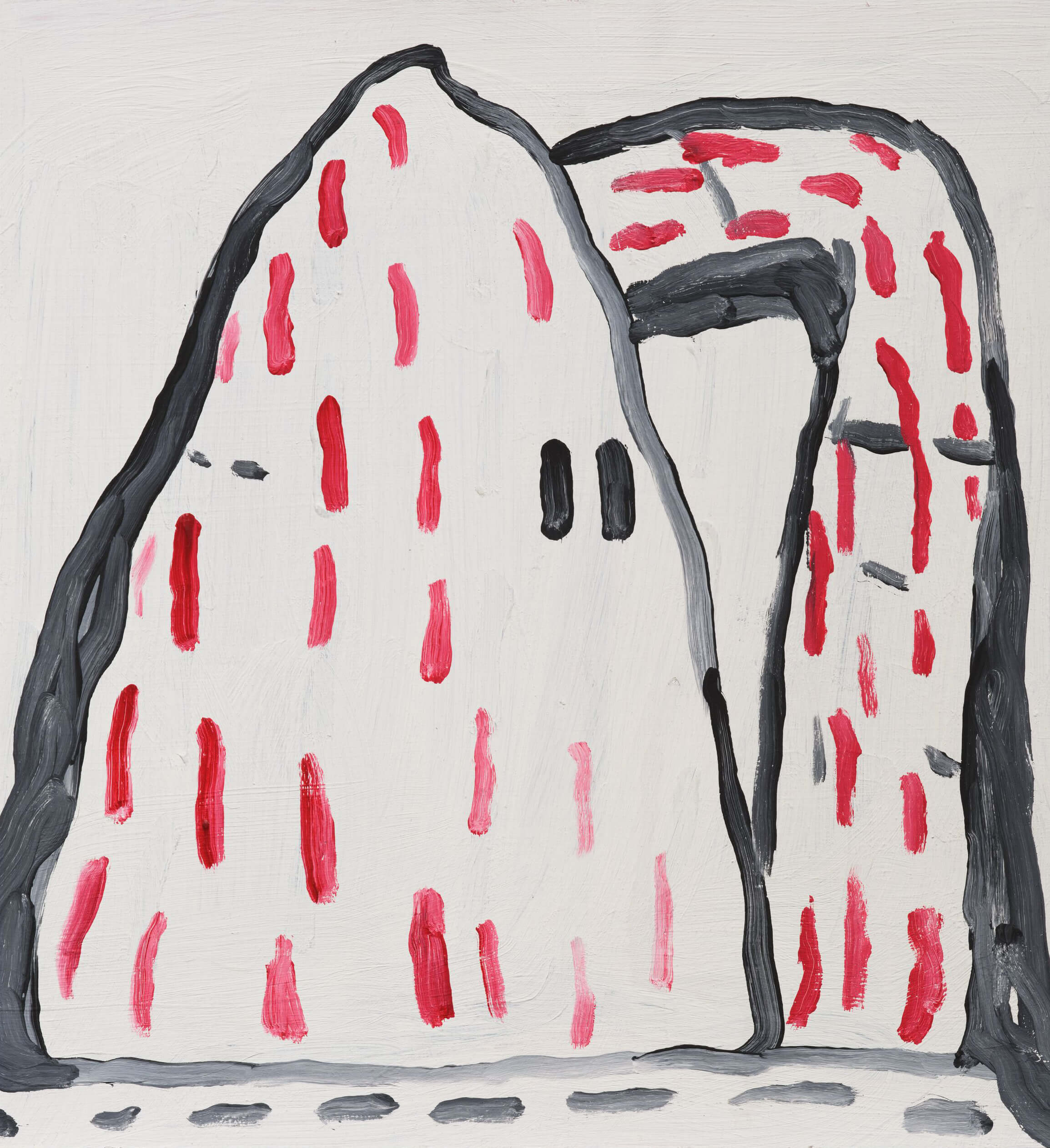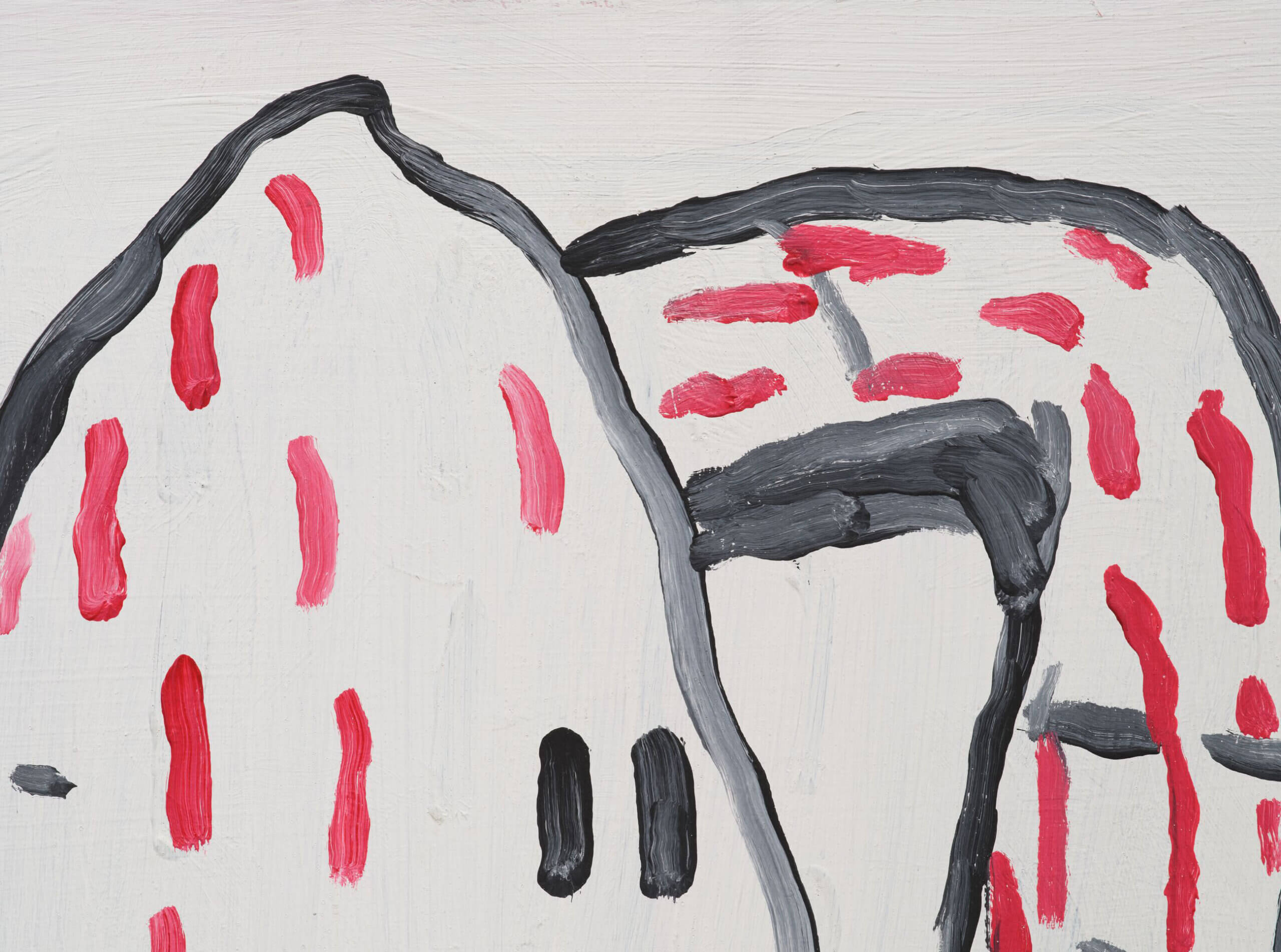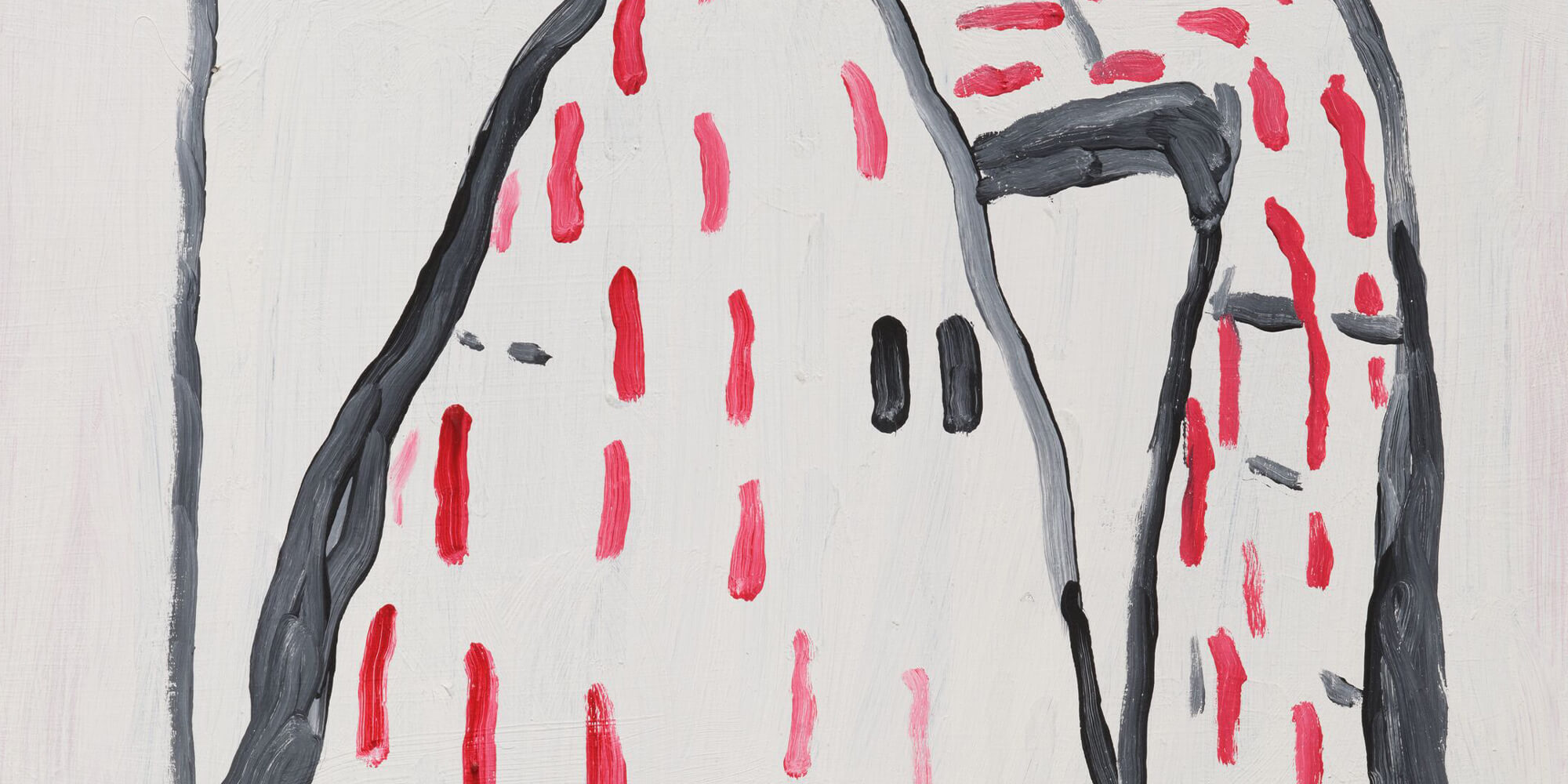
Philip Guston
Untitled
Untitled
1969 Acrylic on panel 41.9 x 49.5 cm / 16 ½ x 19 ½ in 45.1 x 52.7 x 3.8 cm / 17 ¾ x 20 ¾ x 1 ½ in (framed)
In the late 1960s, Philip Guston created some of the most influential paintings of twentieth century American art. A quintessential example from this seminal body of works, ‘Untitled’ (1969) marks a turning point both in the artist’s oeuvre and the history of American art. It belongs to a small group of important works on panel made between 1968 and 1969 depicting Guston’s iconic ‘hoods’ with raised arms, ready to strike. Examples of these rare ‘hoods’ can be found in important collections including the Modern Art Museum of Fort Worth.
‘The 1969-70 paintings—motivated in part by his outrage at watching the 1968 Democratic Convention on TV—reintroduced the K.K.K. hoods. Crime is implied by their red-splattered sheets, the piles of limbs, the pointing fingers.’—Roberta Smith, Art in America, 1979 [1]
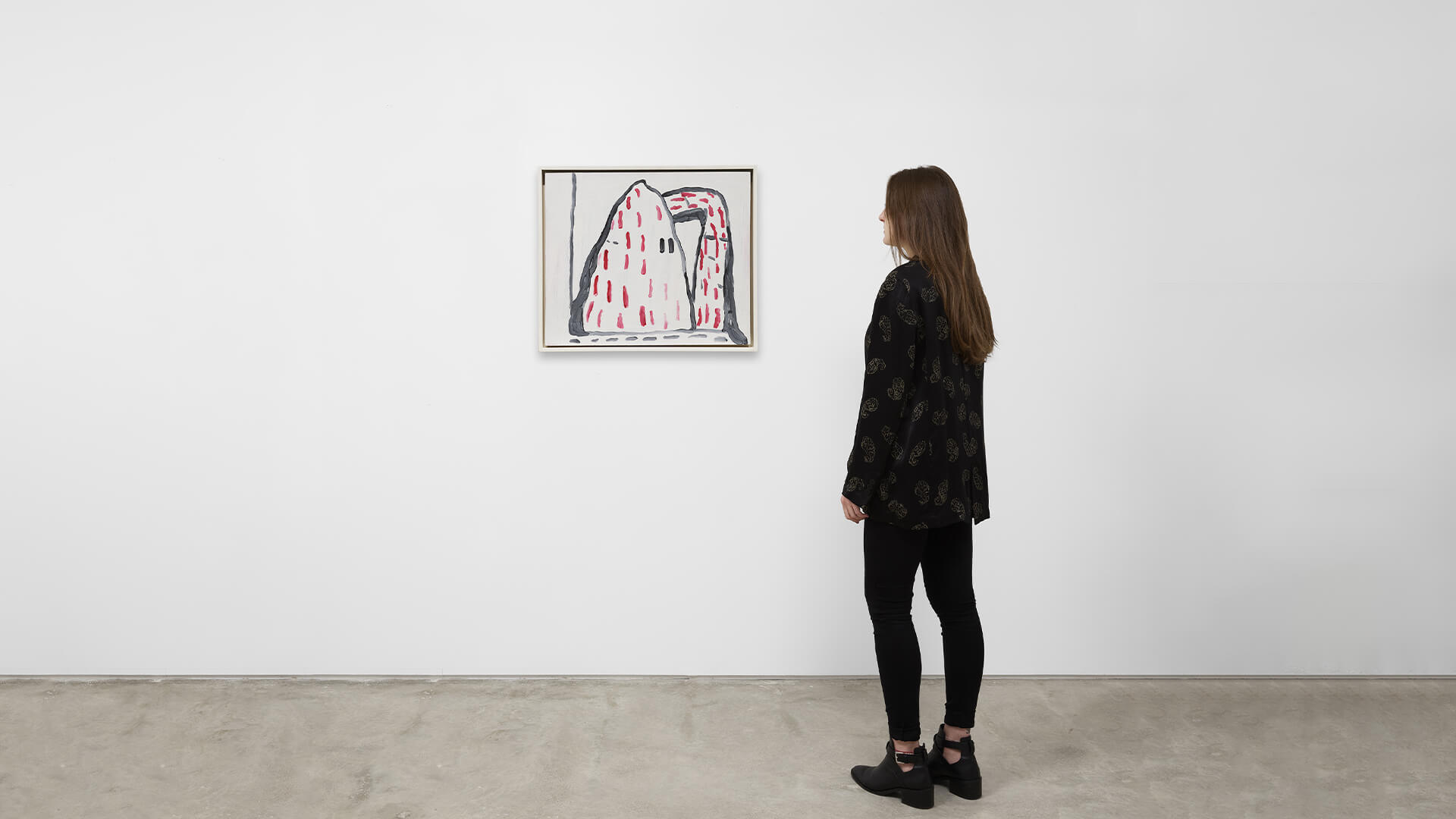
Referred to by the artist as ‘hoods’, the masked figure at the centre of ‘Untitled’ is a consummate example of Guston’s most recognisable motif. Born to Jewish immigrants from Odessa, Guston grew up in Los Angeles during a period of rampant Ku Klux Klan activity. Depictions of masked and hooded figures emerged very early in Guston’s career in work from the 1930s. These figures were overt references to Klansmen as figures of oppression and terror. They resurface in his late work both as symbols of extremism and the banality of evil in American society.
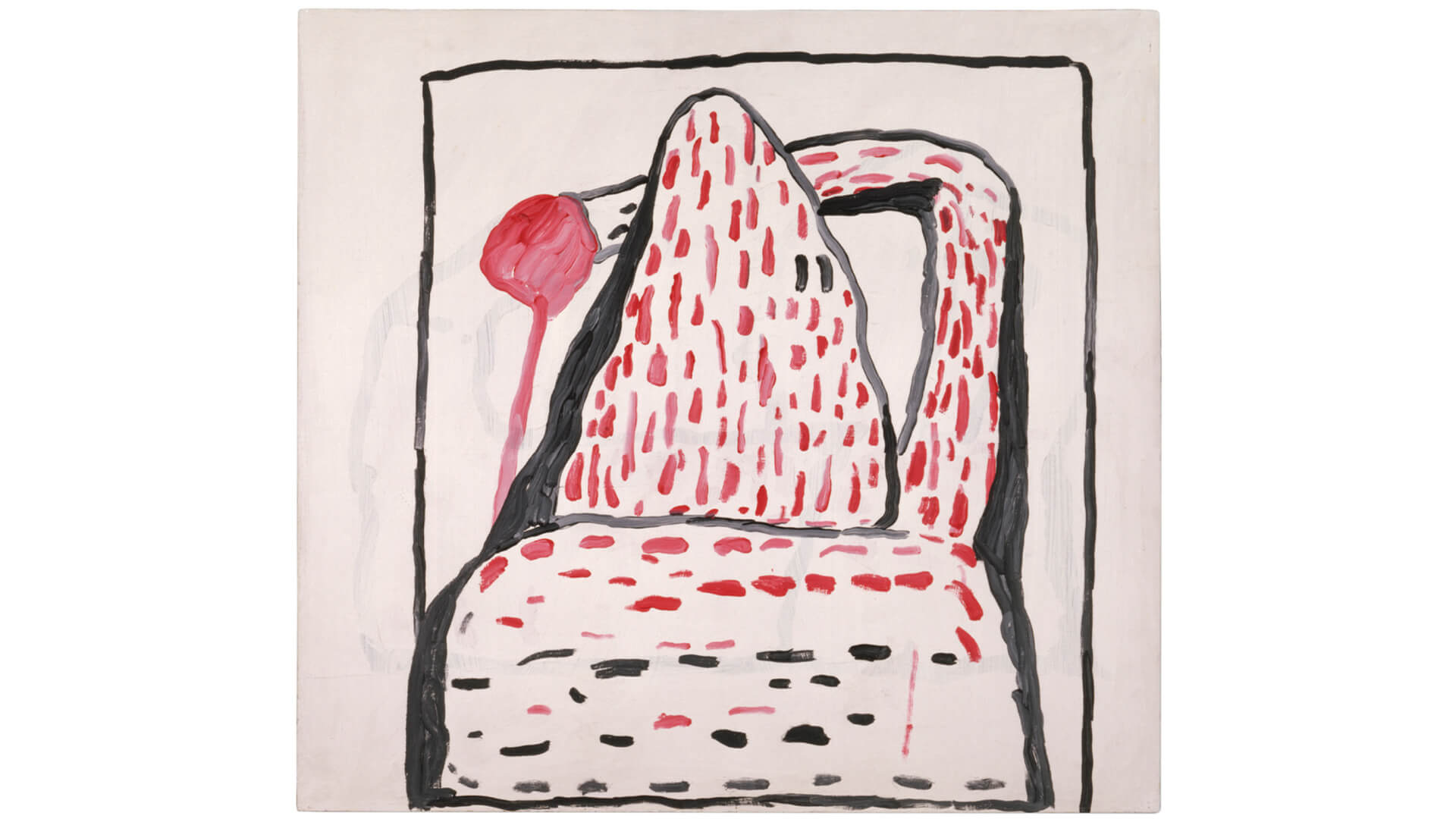
Guston depicted one of his earliest Klansman raising a whip and several of his 1969 ‘hoods’ are wielding similar objects. They recall the batons infamously used by police to attack protesters shortly before Guston painted the blood-splattered figure in ‘Untitled’. Guston recounted: ‘I was painting common objects and so on, and the Democratic Convention took place, in 1968, and like everybody else I was very disturbed about it. It seemed to connect with way back in the ’30s when I was just beginning to paint. ... The Klan was very powerful in L.A. in those years.’ [2]
Philip Guston, Untitled, 1969 Collection of the Modern Art Museum of Fort Worth
‘What kind of man am I, sitting at home, reading magazines, going into a frustrated fury about everything—and then going into my studio to adjust a red to a blue.’—Philip Guston [3]
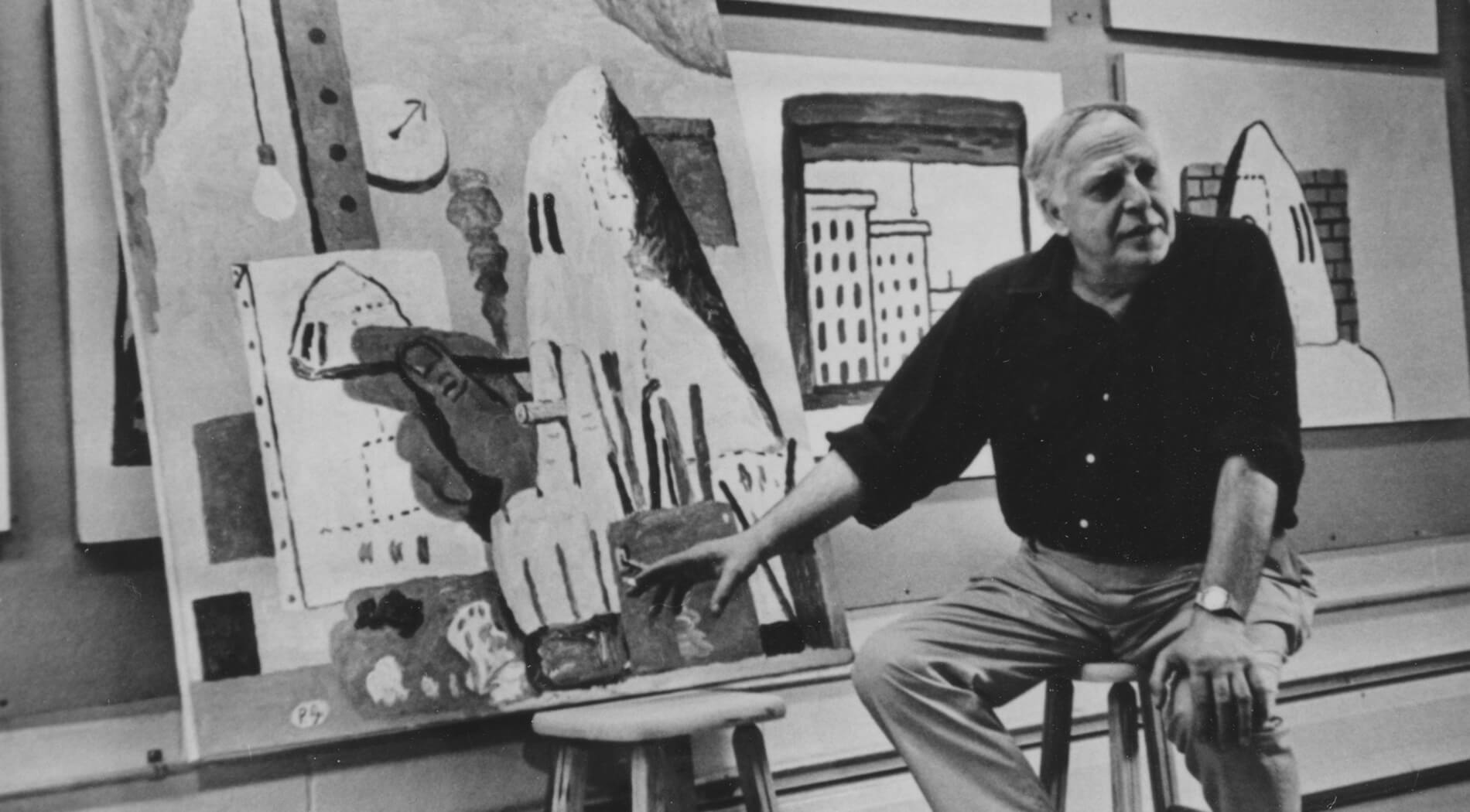
Deeply disturbed by the social injustice and violence he saw, Guston developed a radical form of self-examination. ‘They are self-portraits,’ he famously declared. ‘I perceive myself as being behind the hood.’ [4] In ‘Untitled,’ Guston may be trying on several different kinds of coverings. Besides a KKK robe, the hood in ‘Untitled’ could also be a white pointed capirote worn by flagellants while striking their backs with a small scourge until blood soaked. Guston painted an unambiguous image of self-flagellation in 1974, depicting himself with his arm raised flagellating his back with an instrument of penance.
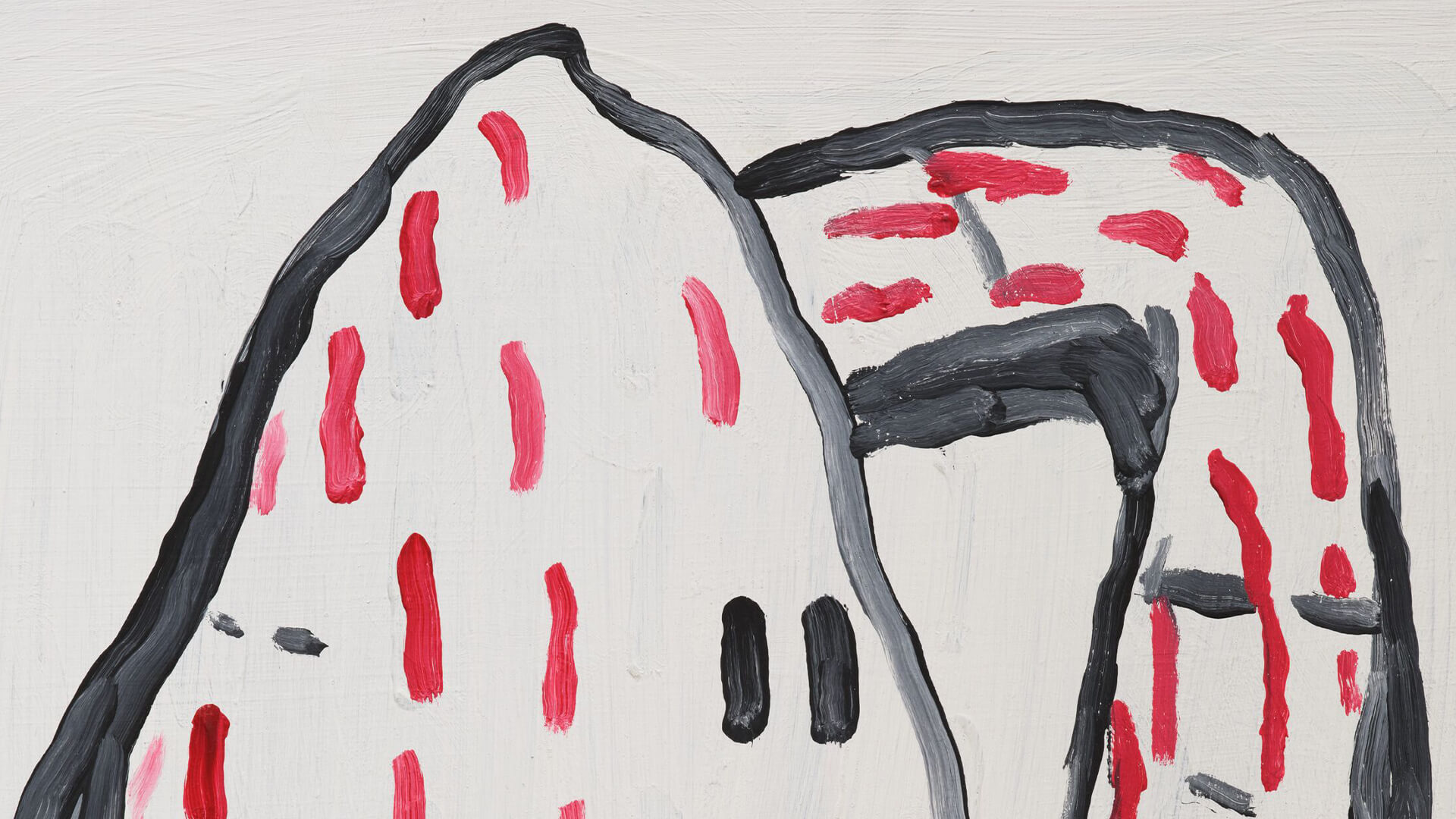
Initially met with disbelief and incomprehension when first unveiled, Guston’s return to figuration changed the course of art history. Grappling with the human and everyday aspects of evil, Guston’s ‘hoods’ are consciously jarring. Unlike his later satirical drawings of Nixon, ‘Untitled’ does not implicate specific individuals, holding up a mirror to society at large instead. Drawing on some of Guston’s earliest work, childhood memories in Los Angeles, as well as his reaction to the tumultuous political climate of the late 1960s, ‘Untitled’ is a deeply personal work with universal meaning.
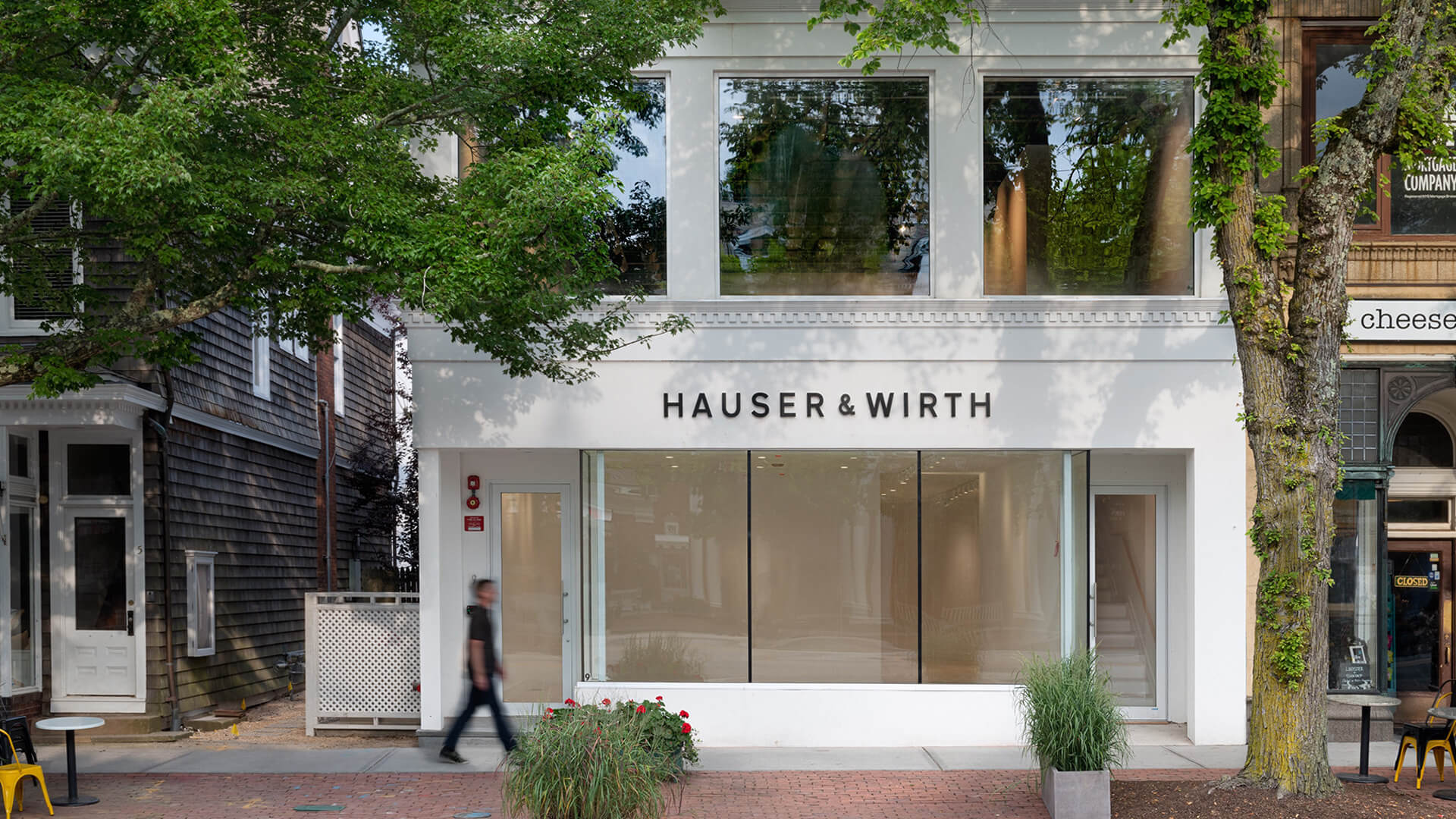
On view in Southampton
‘Untitled’ by Philip Guston is on view by appointment at Hauser & Wirth Southampton, alongside outdoor sculptures by Camille Henrot and our forthcoming exhibition of works by Luchita Hurtado, opening 13 August. Please visit our location page or contact our team to learn more.
Artwork images © The Estate of Philip Guston Artwork photography: Thomas Barratt Philip Guston, Untitled, 1969 © The Estate of Philip Guston. Collection of the Modern Art Museum of Fort Worth, Gift of Musa and Tom Mayer Philip Guston with ‘The Studio,’ 1969 © The Estate of Philip Guston. Photo: Frank Lloyd
[1] Roberta Smith, 'The New Gustons', Art in America, January–February 1978. [2] Philip Guston quoted in Harry Cooper, Mark Godfrey, Alison de Lima Greene (et al.), ‘Philip Guston Now’, Washington DC: National Gallery of Art, 2020, p. 84. [3] Philip Guston quoted in Robert Slifkin, 'Philip Guston's Return to Figuration and the '1930s Renaissance' of the 1960s' in The Art Bulletin, Vol. 93 No. 2, 2011, p. 220. [4] Philip Guston quoted in Clark Coolidge (ed.), ‘Philip Guston. Collected Writings, Lectures, and Conversations’, Berkeley CA: University of California Press, 2011, p. 282.

